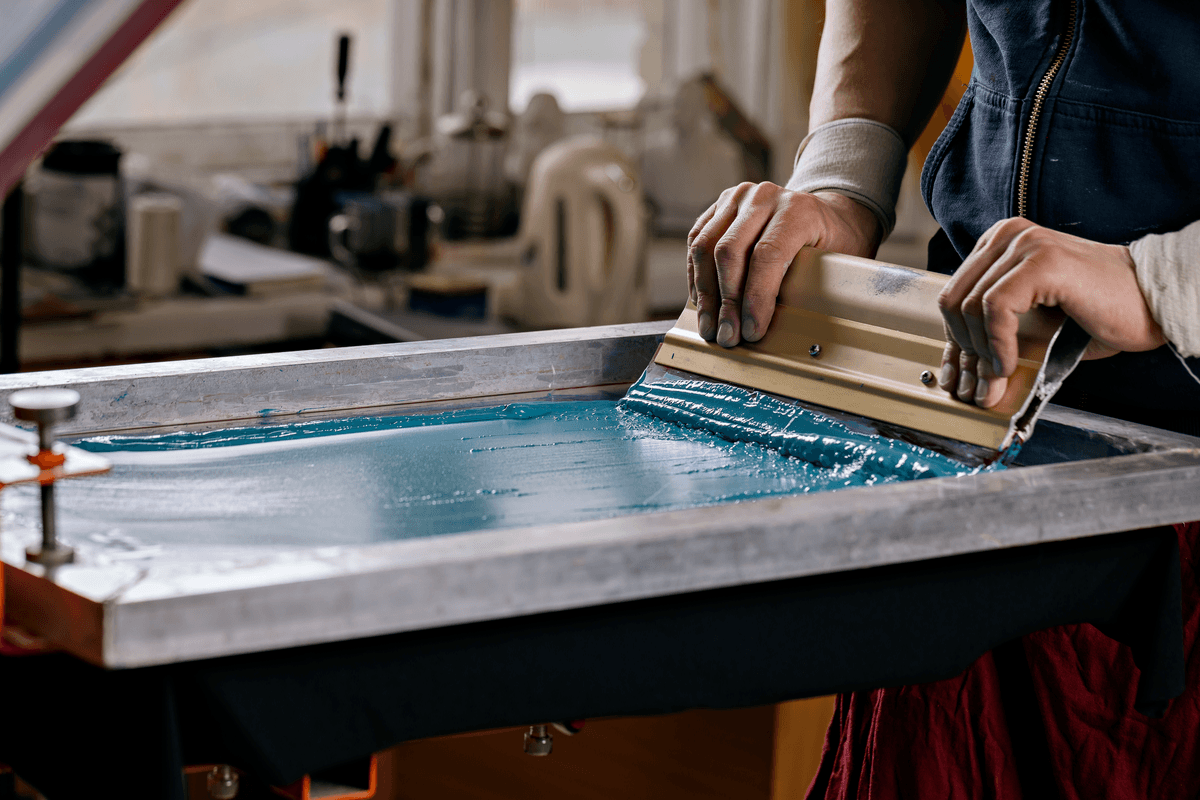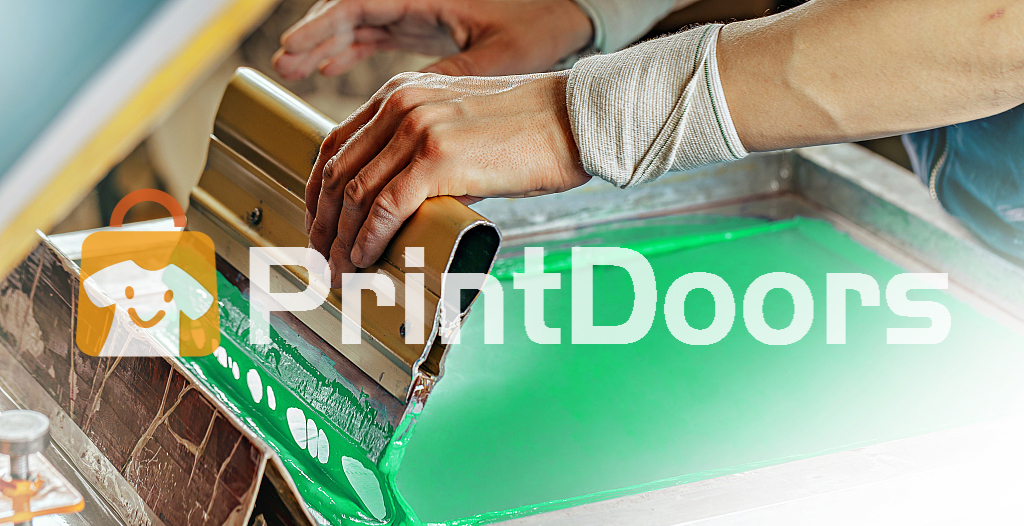Not known Facts About Tx Tees
Not known Facts About Tx Tees
Blog Article
How Tx Tees can Save You Time, Stress, and Money.
Table of Contents10 Simple Techniques For Tx TeesRumored Buzz on Tx TeesAll About Tx TeesThe Ultimate Guide To Tx TeesThe Ultimate Guide To Tx TeesIndicators on Tx Tees You Need To KnowEverything about Tx Tees
That brings your total to approximately $1,900 gross and shipping. Add up various other expenses, like the number of energies it takes to run the shop and the price of ink and emulsion per design. custom screen printing. Take the print below. This is a one-color photo, so the expense of ink per t-shirt is about 20 cents.The solution must just be a couple of cents given that you 'd just require to layer one display for this work. Usually, printers attempt to make up to 45% earnings on a print work.

With DTF, you can print a handful of t shirts, or simply one. Utilize the same calculator as the area over to determine just how much earnings you would certainly use DTF transfers. Contrast the prices and revenues to whichever method talks finest to your setup and procedure. Both screen printing and DTF have their niches worldwide.
The Greatest Guide To Tx Tees
The very best means to know? Ask around and see what print stores like your own are doing. custom t-shirt design. Attempt both out and see which you like better
When you're picking what kind of printing method to utilize for printing your art work styles on your garments, it is essential that you know the differences between these two methods so you can make the most of results while lessening prices. Display printing is one of the most generally made use of strategy for publishing layouts on fabrics.
DTG printing is additionally referred to as place or straight to garment printing due to the fact that it publishes just what is required rather than making a screen as screen printers do. https://anotepad.com/notes/qbpsf9ge. Screen printing functions by screen filler squeegee screen printing ink display mesh screen, after that transferring the photo to garment utilizing heat and/or stress
The DTG printer uses special dye-sublimation inks that are used into a pre-designed photo by a digital printing system. The inks come to be part of the textile, permitting vibrant colors and remarkable information. It's also referred to as spot or direct to garment printing due to the fact that it prints just what is required instead of making a display as screen printers do.
All About Tx Tees
It's much quicker - you can publish a fullcolor picture in mins, as opposed to hours for display printing. Second, there's no established up time or costs involved - you can print any kind of style you such as, without needing to produce a display initially. Third, there's no waste - since display printers screen print one style each time, they have to screen each color separately.
The paper is very expensive and can only be used once. Once it's published on, it needs to be thrown out. - The first acquisition price is less than the in advance financial investment of DTG printers- You can publish multi-color styles one screen at a time rather than needing to publish each shade individually like DTG printing.

See This Report on Tx Tees
Instead of using display mesh as display printers do, color sublimation printers use laser innovation to transfer your pictures onto garments or paper. A warmth procedure transfers the dye from its solid-state directly right into the gas stage which subsequently fuses it onto fabric substrates when they are quickly warmed to high temperature levels under high pressure.
Sublimation printing is green. It makes use of less water than screenprinting, and because it doesn't include the usage of unsafe solvents, it's safe for all types of clothing. The dye sublimation inks are also odor free when treated, unlike screen printers that utilize dangerous chemicals throughout the display printing procedure that leave an undesirable smell.
They likewise save money on expensive devices like exposure units because dye sublimation printers don't require a UV exposure device or a flash treatment stove that is commonly made use of in display printing (custom t-shirt design). What is straight to garment printing (DTG Printing)? DTG printing is an electronic screenprinting process that prints straight onto fabric making use of specialized inkjet printers
Tx Tees Can Be Fun For Everyone
DTG printing offers many advantages over conventional screenprinting, including the capacity to print photo top quality pictures, better color vibrancy, and the capacity to print designs on darker materials. DTG printers work by warming the textile ink till it becomes a gas. The gas then penetrates the material, bonding with the fibers to develop a long-term print.

Screen printers simply prepare their screen after that begin publishing up until they run out of product or ink.- There try this out is a wide variety of seasoned display printers around the world, which can be valuable for novices. - It's a slower process - display printers typically have to wait for the ink to dry prior to they can publish the next color- Display printers need manual work, so there's a higher learning contour and it takes longer to create a top notch style- Screen printing isn't as exact as DTG printing, so you might get some "blood loss" of shades from one part of the photo onto one more if not done properly.
The Single Strategy To Use For Tx Tees
Nonetheless, instead of making use of screen mesh as display printers do, dye sublimation printers utilize laser technology to move your images onto garments or paper. A warm process transfers the dye from its solid-state directly right into the gas phase which consequently integrates it onto textile substratums when they are rapidly heated up to high temperatures under high pressure.
Sublimation printing is green. It utilizes much less water than screenprinting, and since it does not entail using dangerous solvents, it's safe for all kinds of clothing. The color sublimation inks are likewise odorless when cured, unlike screen printers that make use of harmful chemicals throughout the screen printing process that leave behind an undesirable odor.
They also save cash on pricey tools like exposure units considering that color sublimation printers do not call for a UV direct exposure unit or a flash cure oven that is usually made use of in display printing. What is straight to garment printing (DTG Printing)? DTG printing is an electronic screenprinting procedure that publishes straight onto textile using specialized inkjet printers.
10 Easy Facts About Tx Tees Explained
DTG printing uses lots of benefits over conventional screenprinting, including the ability to publish photo high quality pictures, greater shade vibrancy, and the capacity to publish styles on darker fabrics. DTG printers function by warming the textile ink until it becomes a gas. The gas then permeates the textile, bonding with the fibers to produce a long-term print.
Report this page